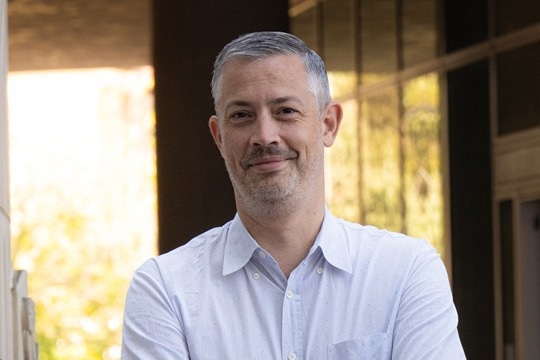Reviewed by Danielle Ellis, B.Sc.Jul 11 2023
The “live reporter” technology, developed by synthetic biologists at Princeton University and Rice University, has shown that it is possible to expose, with a great deal more accuracy than is now possible, the functioning of networks of signaling proteins in living cells.
 Caleb Bashor. Image Credit: Rice University
Caleb Bashor. Image Credit: Rice University
The revolutionary reporting tool can display, among other things, how quickly signaling networks react and how those reactions differ in both time and space between different cells.
The tool was made by scientists utilizing inconspicuous proteins that latch onto a crucial signaling system that controls growth, differentiation, migration, inflammation, and other activities in human cells.
The Rice-Princeton team recently showed its modular method for tagging receptor tyrosine kinases (RTKs) with reporter proteins that activate green fluorescent proteins anytime their RTK partners become phosphorylated in a study published in the open-access journal eLife.

Image Credit: Billion Photos/Shutterstock.com
Kinases are enzymes that can change the function of other proteins by attaching or detaching phosphate groups, which is known as phosphorylation. RTKs are specialized kinases that become phosphorylated when they receive external signals or stimuli and then regulate important cell functions.
The Rice-Princeton team demonstrated that the “live reporter” device could be used in conjunction with a microscope to create a video record of signaling network activity in living cells.
Where cells shine and how brilliantly they glow reveals the position and intensity of signal network reaction, according to Caleb Bashor.
Most of the time, when you are studying stuff that happens inside of cells, like signaling networks or gene networks, you have to destroy the cells in order to look at their contents. Anytime you can build something where the cells stay alive, and you can watch how the signaling network works in real time, inside of the cell, it is a great advantage.”
Caleb Bashor, Study Co-Corresponding Author and Assistant Professor, Bioengineering and Biosciences, Rice University
The reporters were given the name “pYtags” by the researchers in accordance with the biochemical nomenclature that designates tyrosine as “Y” and as “pY” when phosphorylated.
In conjunction with Jared Toettcher and Celeste Nelson’s research groups at Princeton, Bashor and Xiaoyu Yang, a PhD student in Bashor’s research group, created pYtags. The research demonstrated that the technology could capture data from human fibroblast cells’ RTKs, also known as growth factor receptors.
Bashor added, “We take an engineered protein that is part of a different system—it is actually part of immune signaling—and we put it into this new context, which is fibroblast cells that Jared works with in his lab at Princeton. We think it is probably not interacting with anything else in the cell because it is from a completely different cell type. So, it just kind of hangs out on the end of the growth factor receptor.”
The RTK partner and the pYtag reporter are intended to co-activate and cause a proportional amount of fluorescence. Therefore, the cell glows brighter under a microscope the stronger the RTK reaction.
Bashor further stated, “It can receive that phosphorylation signal from the growth factor receptor. So, when the receptor gets activated, the green fluorescent protein comes in, binds to something close to the membrane, and you get what looks like this green ring around the outside of the cell. That tells you, in real time, when the cells are seeing the growth factor and how fast the pathway is turning on.”
According to Bashor, pYtags can be used to track several tyrosine kinase receptor types.
He further noted, “We show in the paper that this reporter could be put onto multiple different growth-factor receptor types, and that could be used as a reporter for all of them. This is a window into the dynamics of cellular signaling that we really didn’t have before.”
Yang is a graduate student in Rice’s interdisciplinary Systems, Synthetic, and Physical Biology (SSPB) department.
The National Science Foundation (1750663, 2134935), the Office of Naval Research (N00014-21-1-4006), the National Institutes of Health (EB032272, GM007388, HL164861, HD099030, HD111539), a Vallee Scholar award, a Schmidt Transformative Technology Award, the National Science Foundation Graduate Research Fellowship Program, and Japan’s National Institute of Natural Sciences funded the study.
Source:
Journal reference:
Farahan, P. E., et al. (2023). pYtags enable spatiotemporal measurements of receptor tyrosine kinase signaling in living cells. eLife. doi.org/10.7554/eLife.82863